Journal of Food: Microbiology, Safety & Hygiene
Open Access
ISSN: 2476-2059
ISSN: 2476-2059
Research Article - (2018)Volume 3, Issue 2
The safety of foods is affected by several factors, from the quality of the raw materials to food handling and hygiene practices. This study aimed at evaluating the consequences of different hygiene practices on the microbiological quality of street vended Ready-To-Eat (RTE) meat. A total of 115 meat samples were purchased from vendors at three different areas; MTN-taxi rank, Bree Street and Hancock Street around Johannesburg Central Business District (CBD) where a a pre-structured check list was used for observational study of the hygiene practices of meat vendors. Isolates were identified using standard biochemical and Molecular methods. The study revealed that 90.63, 77.42, and 68.89% of vendors respectively exposed their meats to dusts and flies, 94.4, 92.31 and 87.5% of vendors handled money while serving foods at the different locations respectively. Stagnant water was found at 21.88% and 55.56% of vending locations at MTN taxi-rank and Hancock Street but were absent in vending sites at Bree Street. The overall mean total bacterial and coliform counts in the samples ranged from 4.3-6.03 × 102 and 1.60-1.95 × 102 cfu/ml respectively. Fifteen different bacterial species were detected in the meat samples with Staphylococcus aureus occurring in all the meat types except for the chicken gizzards. The percentage occurrence was 14, 43, 50 and 20 for chicken meat, beef head, beef intestines and wors respectively. The study showed the Poor hygiene practices of the vendors of the RTE meat thus consumers are at risk of food borne diseases. Proper enforcement of health regulations should be enacted in the country.
Meat; Food-borne pathogens; Hygiene; Street vending; Safety
In developing countries such as South Africa, the migration of people from rural to urban areas as a result of unemployment has led to street foods becoming an increasingly important part of daily diet [1]. Monitoring and ensuring the safety of street-vended food in many countries is a big challenge considering that this food is often less expensive and is often prepared and sold in the streets by local food vendors, sometimes without any training or background on food safety and hygiene [2].
Contamination of food in most developing countries is as a result of several factors such as, Methods applied in processing foods, inadequate storage temperatures and poor personal hygiene of food handlers [3]. Furthermore, the prevalence of foodborne illnesses in developing countries is linked with other economic and developmental issues, such as legislation, infrastructure and enforcement mechanisms which could results into inadequacy of food safety laws, laxity in regulatory enforcements, and lack of education for food handlers [4]. The prevalence of food and waterborne diseases is estimated at 3 to 4 occurrences per child per year in Africa and food and waterborne diarrhoeal diseases are estimated to cause between 450,000-700,000 deaths in Africa annually, with many more sporadic unrecorded cases [5,6]. In most of these cases, pathogens such as Escherichia coli, Bacillus cereus, Salmonella, Hepatitis, Shigella, Brucella, Staphylococcus aureus, Campylobacter, rotavirus and enteric bacteria are identified [3,4].
In South Africa at Johannesburg Central Business District, street-vended meats is often prepared and sold under improper hygienic conditions as vendors usually concentrate in overcrowded areas such as taxi ranks and busy street pavements [7,8].
This research work aimed at evaluating the impact of hygienic practices and attitudes on the microbial quality of street vended meats sold around Johannesburg CBD through an observational study.
Study area and design
A cross-sectional observational descriptive study was conducted around Johannesburg CBD, South Africa from December 2015 to April 2016 in order to assess and evaluate the general hygiene practices of vendors of street-vended foods towards the food safety of street-vended ready-to-eat meats sold in streets around Johannesburg CBD. This design was chosen as it would provide information on hygienic practices of Street vended meat.
Data collection and instrument used
The observations were done using a pre-structure check list form to assess food safety practices of street-vended food by adapting different check lists used in previous studies [9-12]. One hundred and fifteen participants were assessed in order to determine the hygiene practices. Recordings were done of all observations at the vending sites included food safety practices.
Collection of meat samples
One hundred and fifteen samples (chicken meat, chicken gizzard, wors, beef intestine and beef head meat) were purchased twice weekly for 12 consecutive weeks. On each day of sampling, meat samples were collected during the day between 12:00 to 14:00 h. All samples were immediately placed in a cooler box and transported to the Microbiology Laboratory of Animal health department, North-West University and kept at -18°C for one day before analysis.
Sample preparation and bacterial isolation
Twenty five grams of meat samples were weighed aseptically and added to 225 ml of nutrient broth in order to obtain one part of sample and nine parts of nutrient broth (1:10). The inoculum products were incubated aerobically for 24 h in a shaker incubator [13]. 1 ml of homogenised inoculum product was pipetted into Eppendorf tube containing 9 ml of sterile nutrient broth (Oxoid product) and homogenised. From the 10-fold dilutions of homogenates, 1 ml of the 10-2 dilution of homogenate products was pipetted and plated into nutrient agar and MacConkey agar plates and incubated aerobically at 37°C for 48 h [13] and at 44°C for 24 h for coliforms in a room incubator. The total number of colonies were counted using colony counter (Model #81-520-000 Bioresearch supplies: Perry hall, USA) and recorded as total bacterial counts and total coliform counts. The count for each plate was expressed as colony forming units of the suspension (CFU/g).
Identification of the isolates
The isolates were purified by sub culturing and characterised based on colony morphology, cellular morphology, staining and biochemical reactions such as catalase test, oxidase test, Voges proskauer test, Indole test [14,15].
Molecular characterization of the isolates was based on 16s-rDNA gene sequence analysis [16,17]. These techniques involved DNA extraction, PCR amplification, Agarose gel electrophoresis.
Extraction of genomic DNA
DNA extraction was performed by using zymo Research kit (Zymo-Research fungal/Bacterial Soil Microbe DNA, D6005 USA supplied by Bio lab, South Africa), according to the manufacturer’s instruction.
Amplification of 16S rDNA
The amplification of 16S rDNA gene was done using the method of Ngoma et al. [18]. The PCR was conducted using the Universal primers for the forward 27F (5'-AGA GTT TGA TCC TGG CTC AG-3') and the Reverse 1492R (5'-TGA CTG ACT GAG ACG TTG CGA-3'). These primers were commercially synthesized by Inqaba biotechnical Industrial (Pty) Ltd (Pretoria, South Africa).
Agarose gel electrophoresis
Electrophoresis of PCR products was performed according to the methods and procedure applied by Ngoma et al. [18]. The extraction of genomic DNA product was determined by analysis for the presence of DNA by 1% of agarose gel. The presence of a single bright band (DNA bands) for each sample indicated a successful amplification after which the PCR products were sent to Inquaba, biotechnology laboratory Pretoria, for sequencing.
DNA sequencing
DNA sequencing was performed according to the methods suggested by Ngoma et al. The sequences and chromatograms were observed with Bio-systems; forward and reverse sequences were compared and edited for conformity. Blast programme tools were applied to search for the sequences to find the closest match for each in the Gen-Bank [19]. The closest sequences were then downloaded and aligned with the original sequences using clustal [20].
Statistical analysis
Data obtained in this study were analysed using the Statistical Package for the Social Sciences (SPSS) version 20.0. Bar charts, pie charts, and histograms were used to summarise the percentage frequencies of the following variables: hygiene practices of the streets and types of meats sold per street. Cochran's Q test was used in determining the differences in the hygienic practises of the three streets [21]. The unbalance analysis of variance (ANOVA) was used to determine the difference between the three streets in relation to bacterial counts as well as determine the difference between the types of meats in relation to bacterial counts.
Observational studies on hygienic practices of meat vendors
It was observed during the survey that 90.63%, 77.42% and 68.89% of vendors at MTN-taxi rank, Bree Street and Hancock Street respectively were found to have exposed their meats to dust and flies because they did not sell their products in suitable containers with aseptic covers (Figures 1-3).
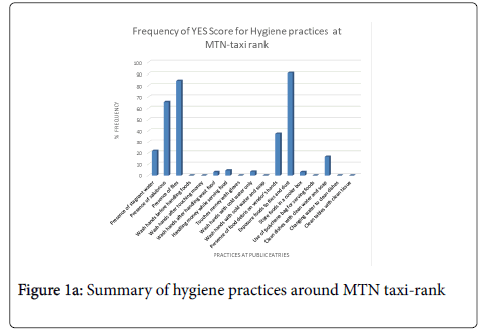
Figure 1a. Summary of hygiene practices around MTN taxi-rank
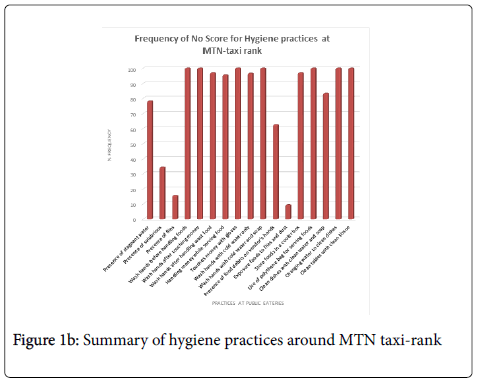
Figure 1b. Summary of hygiene practices around MTN taxi-rank
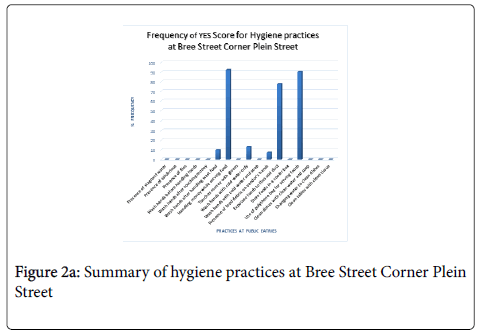
Figure 2a. Summary of hygiene practices at Bree Street Corner Plein Street
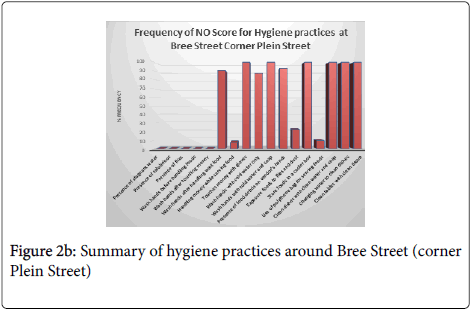
Figure 2b. Summary of hygiene practices around Bree Street (corner Plein Street)
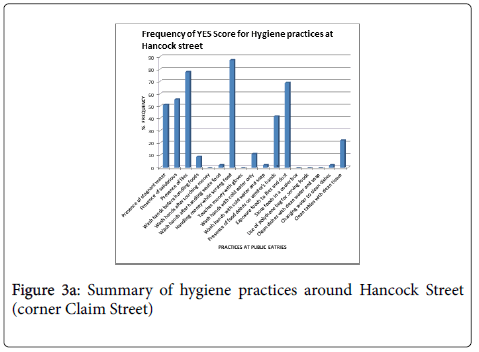
Figure 3a. Summary of hygiene practices around Hancock Street (corner Claim Street)
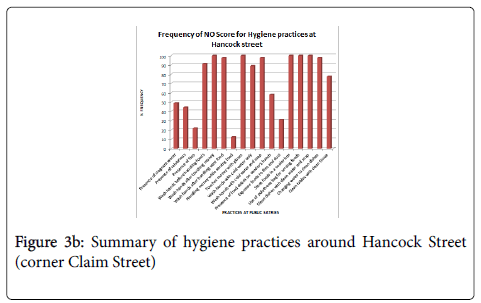
Figure 3b. Summary of hygiene practices around Hancock Street (corner Claim Street)
It was also observed that 94.4, 92.31 and 87.5% of the vendors respectively transacted business with local currencies while serving food at MTN taxi-rank (Figure 1), Bree Street (Figure 2) and Hancock Street (Figure 3).
Furthermore, the results revealed that salubrious around MTN-taxi rank was observed at 65.63% (Figure 1) and 55.56% at Hancock Street (Figure 3) while no salubrious was observed in Bree Street.
Also, 37.5, 7.14 and 41.67% of the vendors had food debris on their hands at the various sales points respectively.
The presence of stagnant water around vending sites was also observed at the MTN taxi-rank (21.88%) and Hancock Street (55.56%) while stagnant water was not found in vending site at Bree Street.
Only 16.67% of the vendors at the MTN taxi-rank wash plates with clean water and soap while vendors in the other two streets did not clean their plates at all with clean water.
In addition, only 2.2% of vendors change water when cleaning dishes while only 22.2% of them uses a clean cloth to clean tables after serving customers.
Other practices observed at all the sampling points were the habit of not washing of hands after handling waste, washing of hands with only water or with water and soap, use of polyethylene for selling meats (Figures 1-3).
Statistical comparisons of the three streets of observation using the Cochran’s Q test revealed that there existed a significant difference in some hygienic practices such as presence of stagnant water (P=0.016), exposure of foods to flies and dust (P=0.015) and usage of polythene bags for serving foods (P=0.000) at the 95% confidence level (P˂0.05) among food vendors in the three streets.
Total viable bacterial and Coliform counts in the meat samples
The total bacteria and coliform counts recorded from the meat samples are presented in Tables 1-6. The Total Viable bacteria count in all the meat samples ranged from 1.1-9.7 × 102 cfu/g with mean Total bacteria count of 6.51, 5.10 and 6.03 × 102 cfu/g for MTN rank, Bree and Hancock streets respectively while the Coliform count for all samples ranged between 1.0-3.6 × 102 cfu/g with overall mean of 1.95, 1.60 and 1.74 × 102 cfu/g for the three sample zones respectively. Cooked intestines from MTN rank had the largest coliform count of 3.6 × 102 cfu/g.
| Sample identification | Total bacterial count (CFU/g) × 102 | Total coliform count (CFU/g) × 102 |
|---|---|---|
| CHG 02 | 9.6 | 2.7 |
| CHG 03 | 4.7 | 1.9 |
| CHG 04 | 6.9 | 1 |
| CHG 05 | 1.9 | 1.4 |
| CHG 06 | 8.6 | 1.3 |
| CHG 07 | 9.4 | 2.6 |
| CHG 08 | 8.1 | 2.1 |
| CHG 09 | 7.2 | 1.8 |
| CHG 10 | 8.6 | 1.9 |
| CHG 11 | 7.1 | 2.6 |
| CHG 12 | 8.2 | 1 |
| CHG 13 | 9.6 | 2.9 |
| CHG 14 | 6.2 | 1.1 |
| CHG 15 | 7.4 | 2.2 |
| CHG 16 | 3.1 | 1.4 |
| CHG 17 | 2.6 | 1 |
| CHG 18 | 5.9 | 1.3 |
| CHG 19 | 4.2 | 1.1 |
| CHG 20 | 7.2 | 2.1 |
| CHG 21 | 6.1 | 1.9 |
| CHG 22 | 3.7 | 1.3 |
| Mean | 6.49 | 1.74 |
Table 1: Total bacterial and total coliform counts in ready-to-eat meat (chicken gizzard) sold around MTN taxi rank, Johannesburg CBD; CHG (Chicken gizzard).
| Sample identity | Total bacterial count (CFU/g) × 102 | Total coliform count (CFU/g) × 102 |
|---|---|---|
| BI O3 | 2.9 | 1 |
| BI 04 | 7.6 | 2.9 |
| BI 7 | 4.9 | 1.8 |
| BI 8 | 9.6 | 2.7 |
| BI 10 | 5 | 1.6 |
| BI 11 | 7.8 | 3.6 |
| BI 16 | 8.6 | 1.9 |
| BI 18 | 5.2 | 1.7 |
| BI 19 | 4.3 | 2.6 |
| BI 21 | 6.7 | 1.3 |
| BI 26 | 7.9 | 1.1 |
| BI 28 | 5.9 | 2.6 |
| BI 31 | 9.4 | 1.3 |
| BI 32 | 3.1 | 1.1 |
| BI 34 | 7.9 | 1.6 |
| BI 35 | 5.1 | 1.3 |
| BI 37 | 9.9 | 2.3 |
| BI 41 | 4 | 1 |
| BI 44 | 7.8 | 3.7 |
| BI 49 | 6.3 | 1.9 |
| Mean | 6.51 | 1.95 |
Table 2: Table 2: Total bacterial and coliform counts in ready-to-eat meat (cooked beef intestine), sold around MTN taxi rank, Johannesburg CBD; BI (Beef intestine).
| Sample identity | Total bacterial count (CFU/g) × 102 | Total coliform count (CFU/g) × 102 |
|---|---|---|
| Wo 1 | 4.1 | 1.1 |
| Wo 2 | 1.4 | 1.3 |
| Wo 3 | 7.9 | 2.1 |
| Wo 4 | 4.1 | 1.7 |
| Wo 5 | 3.3 | 1.3 |
| Wo 6 | 1.9 | 1.1 |
| Wo 7 | 4.2 | 1.7 |
| Wo 8 | 3.7 | 1.3 |
| Wo 9 | 3.2 | 1.1 |
| Wo 10 | 5.8 | 1.6 |
| Wo 20 | 5.6 | 1.3 |
| Wo 21 | 4.3 | 1.9 |
| Wo 22 | 6.7 | 2.1 |
| Wo 23 | 1.9 | 1.1 |
| Wo 24 | 4.9 | 2.1 |
| Wo 25 | 7.8 | 2.4 |
| Wo 26 | 5.2 | 1.8 |
| Wo 27 | 6.1 | 1.6 |
| Wo 28 | 6.1 | 2.2 |
| Wo 29 | 6.4 | 2.1 |
| Wo 31 | 5.9 | 1.4 |
| Wo 33 | 6.8 | 1.9 |
| Wo 34 | 4.7 | 1.3 |
| Wo 37 | 9.1 | 2.4 |
| Mean | 4.3 | 1.64 |
Table 3: Total bacterial and coliform counts in ready-to-eat meat (wors) sold around Bree street Johannesburg CBD; Wo (Wors).
| Sample identity | Total bacterial count ( CFU/g) × 102 | Total coliform count (CFU/g) × 102 |
|---|---|---|
| CHM 5 | 8.6 | 1.1 |
| CHM 13 | 7.6 | 1.7 |
| CHM 14 | 1.1 | 1.5 |
| CHM 20 | 9.7 | 3 |
| CHM 22 | 7.2 | 2.6 |
| CHM 25 | 5.9 | 1 |
| CHM 27 | 4.4 | 1.3 |
| CHM 29 | 4.1 | 1 |
| CHM 30 | 1.7 | 1.1 |
| CHM 31 | 3.8 | 1.3 |
| CHM 33 | 1.9 | 1 |
| CHM 36 | 3.2 | 1.1 |
| CHM 37 | 7.2 | 1.9 |
| CHM 42 | 4.1 | 1.1 |
| CHM 43 | 4.8 | 2.6 |
| CHM 45 | 6.4 | 2.1 |
| CHM 46 | 3.5 | 2.7 |
| CHM 47 | 5.6 | 1.9 |
| CHM 52 | 9.1 | 1.7 |
| CHM 54 | 8 | 1.2 |
| CHM 55 | 2.1 | 1.3 |
| CHM 58 | 3.4 | 1.1 |
| CHM 63 | 4.2 | 2 |
| CHM 66 | 6.4 | 1.5 |
| CHM 67 | 2.3 | 1 |
| Mean | 5.1 | 1.6 |
Table 4: Total bacterial and coliform counts in ready-to-eat meat (braai Chicken) sold in Bree Street Johannesburg CBD; CHM (Chicken meat).
| Sample identity | Total bacterial count (CFU/g) × 102 | Total coliform count (CFU/g) × 102 |
|---|---|---|
| BHM 2 | 8.7 | 1.2 |
| BHM 1 | 5.6 | 1.1 |
| BHM 8 | 4.9 | 1.3 |
| BHM 9 | 5.1 | 1.5 |
| BHM 14 | 6.6 | 1.7 |
| BHM 15 | 4.6 | 2.9 |
| BHM 23 | 3.9 | 1.4 |
| BHM 24 | 5.9 | 1.1 |
| BHM 28 | 6.2 | 1.7 |
| BHM 5 | 4.8 | 2.3 |
| BHM 22 | 7.2 | 1.9 |
| BHM 29 | 9.2 | 1.1 |
| BHM 31 | 6.3 | 2.1 |
| BHM 33 | 8.2 | 1.9 |
| BHM 30 | 7.2 | 2.3 |
| BHM 34 | 7.6 | 1.8 |
| BHM 36 | 3.1 | 1.5 |
| BHM 37 | 5.8 | 2.1 |
| BHM 32 | 2.9 | 1.3 |
| BHM 17 | 6.1 | 1.1 |
| BHM 16 | 4.7 | 1.6 |
| BHM 13 | 4.9 | 2.2 |
| BHM 12 | 6.3 | 2.9 |
| BHM 10 | 9.7 | 1.7 |
| BHM 11 | 5.3 | 1.1 |
| Mean | 6.03 | 1.71 |
Table 5: Total bacterial and coliform counts in cooked beef head meat sold around Hancock Street Johannesburg CBD;BHM (Beef head meat).
| Sample identity | Bacterial identity | Accession number | Identity% |
|---|---|---|---|
| BI29D2 l1 | Staphylococcus aureus | KX447584.1 | 94% |
| GIZ 20 D1 | Staphylococcus aureus | KX447584.1 | 95% |
| BHM2 D2 | Staphylococcus aureus | KX447584.1 | 99% |
| CH4 D3 | Staphylococcus aureus | KX447584.1 | 95% |
| BHM 23M | Staphylococcus aureus | KX447584.1 | 98% |
| Wo D3 | Staphylococcus aureus | KX447584.1 | 96% |
| Wo 8D1 | Bacillus thuringienis | EU161995.1 | 94% |
| GIZ 15D1 | Planomicrobium glaciei | FB03B07 | 95% |
| Wo 23 D3 | Bacillus sp | KX453917.1 | 96% |
| CH 22 D1 | Macrococcus caseolyticus | KP058399.1 | 97% |
| CH 22 D1 | Macrococcus caseolyticus | KJ783380.1 | 99% |
| CH 22 D1 | Staphylococcus aureus | KX447584.1 | 94% |
| BI 19D3 | Bacillus subtilis | KU936340.1 | 99% |
| GIZ 3D3L1 | Bacillus cereus | KU977289.1 | 94% |
| BI 04D2 | Bacillus cereus | KP235535.1 | 94% |
| CH5 D3 | Macrococcus caseolyticus | KC212015.1 | 95% |
| CH 11D2 | Enterococcus faecalis | KJ571205.1 | 96% |
| GIZ 30DM L1 | Planococcus antarcticus | KF318398.1 | 98% |
| Wo 32D3 l1 | Staphylococcus aureus | KX447584.1 | 97% |
| BHM 1D3 | Macrococcus caseolyticus | KC212015.1 | 95% |
| BHM 23D3 | Enterococcus faecium | KR858813.1 | 95% |
| BHM 23 D3 | Staphylococcus aureus | BX571856.1 | 94% |
| BHM 17D3 | Macrococcus caseolyticus | KJ783380.1 | 97% |
| CH 3M | Staphylococcus equorum | DQ232735.1 | 96% |
| CH22 D2 | Macrococcus caseolyticus | KP181626.1 | 94% |
| CH5 D3 | Macrococcus caseolyticus | KP058399.1 | 97% |
| Wo5 D4 | Macrococcus caseolyticus | KJ78380.1 | 95% |
| Wo10 D4 | Macrococcus caseolyticus | KX062008.1 | 96% |
| CH25 ML1 | Planomicrobium glaciei | JF411320.1 | 95% |
| BI3 D1 | Staphylococcus aureus | KX447584.1 | 97% |
| BHM1 D4 | Bacillus sp | JF701942.1 | 95% |
| Wo17 D1 | Macrococcus caseolyticus | KP058399.1 | 95% |
| Wo3 D1 | Lysinibacillus sp | LN483073.1 | 98% |
| CH20 M | Kurthia sp | CP013217.1 | 98% |
| BHM29 D4L1 | Citrobacter sp | KT150059.1 | 93% |
| CH20 M | Kurthia sp | CP013217.1 | 97% |
| GIZ3 D1L1 | Lysinibacillus | KT029127.1 | 95% |
| CH0 D4 | Bacillus cereus | KP235535.1 | 92% |
| GIZ16 D4 | Enterococcus faecium | FJ915708.1 | 94% |
| Wo12 D4 | Staphylococcus vitulinus | JQ684238.1 | 97% |
Table 6: Confirmatory results of bacterial isolates based on PCR and sequencing
Meat samples sold at MTN Taxi-Rank had the highest amount of microbial load in it when compared with samples from the other two streets. There were no significant differences (p ≤ 0.05) in the mean coliform counts across the three areas and across the type of meat. The mean bacterial count in samples from MTN-taxi rank was significantly different from the counts obtained at Bree Street (P˂0.05).
Molecular identification of isolates from meat samples
Fifteen different species of bacterial isolates were identified through the Agarose gel electrophoresis of PCR products using the 27F, 1492R primer for 16S rDNA amplification for bacteria (Figures 4 and 5). A single fragment of about 1450 bp was amplified when genomic DNA from each of the bacteria isolates was used. No amplification product was observed on lane 12 (Figure 4) while no similarity was found at the Gene bank for isolates on lane 6 (Figure 4) and lanes 10-13 (Figure 5).
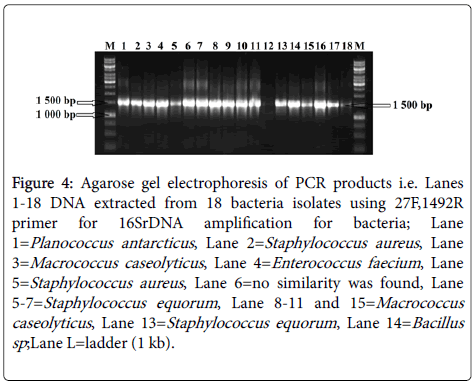
Figure 4. Agarose gel electrophoresis of PCR products i.e. Lanes 1-18 DNA extracted from 18 bacteria isolates using 27F,1492R primer for 16SrDNA amplification for bacteria; Lane 1=Planococcus antarcticus, Lane 2=Staphylococcus aureus, Lane 3=Macrococcus caseolyticus, Lane 4=Enterococcus faecium, Lane 5=Staphylococcus aureus, Lane 6=no similarity was found, Lane 5-7=Staphylococcus equorum, Lane 8-11 and 15=Macrococcus caseolyticus, Lane 13=Staphylococcus equorum, Lane 14=Bacillus sp;Lane L=ladder (1 kb).
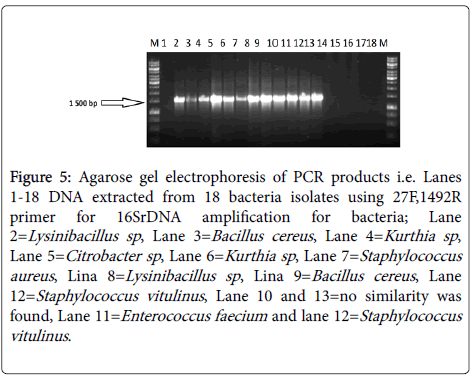
Figure 5. garose gel electrophoresis of PCR products i.e. Lanes 1-18 DNA extracted from 18 bacteria isolates using 27F,1492R primer for 16SrDNA amplification for bacteria; Lane 2=Lysinibacillus sp, Lane 3=Bacillus cereus, Lane 4=Kurthia sp, Lane 5=Citrobacter sp, Lane 6=Kurthia sp, Lane 7=Staphylococcus aureus, Lina 8=Lysinibacillus sp, Lina 9=Bacillus cereus, Lane 12=Staphylococcus vitulinus, Lane 10 and 13=no similarity was found, Lane 11=Enterococcus faecium and lane 12=Staphylococcus vitulinus.
Percentage occurrence of bacteria in meat samples
Figure 6 shows the distribution frequency of the different bacteria isolates in the meat samples. Staphylococcus aureus was present in all the meat samples (14% in chicken meat, 43% in beef head meat, 50% in beef intestine and 20% in wors) except in the chicken, Kurthia spp. had the highest frequencies among other isolates in chicken meat (29%).
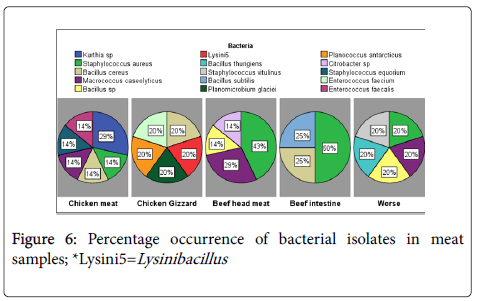
Figure 6. Percentage occurrence of bacterial isolates in meat samples; *Lysini5=Lysinibacillus
The result of this survey revealed the unhygienic practices of food vendors during food preparation, sales and within the vending environment. Flies were found in the entire sales environment and meat samples were exposed to flies and dust especially at the MTN taxi-rank. Flies are vector agents for most of these pathogenic organisms and also aid in spreading of food borne infections like cholera, dysentery etc. The presence of flies around vending places is an indication of poor environmental and sanitation condition and could also be as a result of poor waste management. Researchers reported that uncovered foods can be subjected to airborne diseases and microbes which may be pathogenic if allowed to settle on prepared food surfaces filled with dust [22]. In addition, several research conducted on food hygiene by different authors specified that open areas close to the roadside which expose food to dust and flies become contaminated either by spoilage or pathogenic microorganisms [22-24]. This report also corroborates the findings of other researchers, who concluded that the accumulation of waste around vending sites which attracts insects, pest and rodents may expose food to contamination [25,26]. The Food and Agricultural Organization (FAO) recommends that foods should be prepared in an environment meant only for such purposes, and such places should be kept clean at all times and far from any sources of contamination.
It was also observed that practise of washing hands before handling foods and washing with soap and water is not a usual practice among the food sellers. Less than 3% of the vendors in Hancock Street washed their hands with water and soap before handling foods while none of the vendors in MTN taxi-Rank and Bree street practice washing with water and soap. In addition, most of the vendors collect money while handling or selling their foods. Usually, money as a means of exchange is transferred from one person to another and in the process deposition of microbes on the currency might have occurred. So handling money while selling food is an unhygienic practice which could lead to re-contamination of our food. Washing of hands with soap and water should be a usual practice of both the vendors and the buyers as this could help prevent a lot of food borne diseases and infection. During the outbreak of Ebola virus in Nigeria in 2015, one of the recommendations of WHO was constant washing of hands with soap and water which really helped in curbing the spread of the disease in the nation. The results obtained in this study concur with the findings of Behling et al. who mentioned that contact of hands with foods represents a potentially important mechanism through which pathogens may enter the food supply. Rane [27] also commented that improper food handling can lead to the transfer of pathogenic bacteria such as Salmonella, E. coli and S. aureus from the human body and the environment into food.
In addition, Muinde et al. discovered that the hands of food vendors are usually the most critical means of transmitting pathogens from contaminated places and items, and hence could result in cross contamination upon contact with foods. Such is the case when vendors use their hands to handle money from consumers. This could further aggravate the situation due to the possible accumulation of dirt on the money.
Furthermore, ready-to-eat meat were not stored in a cooler box but in a big casserole and plastic buckets. This situation can increase the risks of multiplication of microorganisms faster in ambient temperatures. Holding food at ambient temperature for long periods of time has been reported to be a major contributor to the occurrence of food poisoning [27]. In addition, vendors do not clean dishes with clean water and do not use soap as well during the cleaning process. Only few (less than 3%) of vendors change water when cleaning dishes while less than 25% of them use a clean cloth to clean tables after serving customers. These findings correlate with the report on food hygiene by Bryan et al., who stated that washing utensils with only cold water without regularly changing water increases the risk of cross contamination from utensils to cooked foods. This is largely caused by greasy and dirty water used to rinse dishes, thus constituting a public health risk to consumers. In the absence of water and soap to clean utensils, street vendors in these areas apply unhygienic methods to clean utensils. A cleaning cloth is used several times to clean utensils without water and soap. This process is done repeatedly until the cloth becomes completely dirty (full of oil).
Another unhygienic practice observed was cutting and serving of meat on the same table used by consumers to eat. In addition, waste food is handled with the same knife used to cut meat, and the same knife used from time to time to dish out the meat from the casserole, thus leading to cross-contamination. These results correlate with the findings of Bryan et al. who reported that major contamination of street food that occurs at vending sites are due to cross contamination, chopping, cutting, cooking and serving food.
This survey revealed that a vast number of vendors (90.32% in Bree Street) used polythene bags in serving customers at Bree Street. Selling foods directly into polythene bags could be implicated as one of the causes of diarrhoea from street food vending [28]. Polythene bags are usually contaminated by food handlers and pathogens may invade the interior of polythene bags during packaging and poor handling practices of vendors [28,29]. Storage of polythene bags in unhygienic places and conditions contributes to their contamination with microorganisms from the environment [29]. Research on the use of high density polythene (HDP) and low density polythene (LDP) bags for packaging of sliced watermelon showed that bacteria and fungi survived and increased in both packages when stored at ambient temperatures [30].
The low level of sanitation and poor hygienic behaviour of food vendors could be due to lack of proper and formal education on acceptable and ideal hygienic practices. Singh et al. in his study on the impact of health education intervention on food safety and hygiene of street vendors commented that education of street vendors is essential in maintaining hygiene and hence safety of food.
The result of total bacterial count observed in this study were lower than those reported in previous studies for cooked meat and chicken sold on streets of Nigeria [31,32]. Furthermore, the total coliform count obtained in this study were lower than the report of Oranusi et al. [33]. It however corroborates the report of Clarence et al. [34] who found low counts of bacteria index 101 × 104 cfu/g in chicken and meat products. Meanwhile, study conducted in Gaborone, Botswana on ready-to–eat meat, revealed a high number of bacterial counts in the meat samples [35,36]. Therefore, the total bacterial count from all the samples were within the range of 102, which is classified as acceptable for ready-to-eat meat and meat products, while the total coliform (an indicator of faecal contamination and hygiene status) were also within the range 102, an indication that the hygienic state of food handlers was less than 40 cfu/ml in all the food analysed.
Molecular analysis based on 16S rDNA revealed a high frequency of occurrence of pathogenic bacteria such as Staphylococcus aureus, Bacillus cereus and other Bacillus spp. The high occurrence of Staphylococcus aureus in this study revealed an unacceptable state of poor hygienic and sanitary practices during the preparation of the foods, which can be linked with the results of the observation study which revealed poor hygienic practices by vendors. The findings of [34,37,38] who reported that poor hygienic practices and poor food handling could result in the occurrence of Staphylococcus aureus agrees with the result of this research where the incidence of Staphylococcus aureus is recurrent in all the street vended meat. A high level of risk has been identified with consuming contaminated street-vended foods containing high levels of coliform and pathogenic bacteria, such as Escherichia coli, Salmonella spp, Staphylococcus aureus and Bacillus cereus [39]. Other species of Staphylococcus were also isolated in this study such as Staphylococcus vitulinus and Staphylococcus equorum isolated in chicken meat and wors. Staphylococcus vitulinus and Staphylococcus equorum were also reported in bovine, caprine and ovine, in milk and dairy products [40-42]. Thus, among the three Staphylococcus species isolated in this study, Staphylococcus aureus is the major one implicated in food poisoning [43].
Micrococcus caseolyticus was found in the different meat samples and from the different areas investigated. The presence of Macrococcus caseolyticus in this study may be linked to the poor handling practices observed among vendors and exposure of food to dust as observed in this study.
Different species of Bacillus were also isolated from meat samples in the three different areas of study. Bacillus species can cause food spoilage or food-borne illnesses [44]. Among Bacillus species, Bacillus cereus is widespread in nature and readily found in soil, where it adopts a saprophytic life cycle; germinating, growing and sporulating in this environment [45,46] also reported the incidence of Bacillus cereus in street foods in Botswana and from Biltong respectively. The presence of different species of Bacillus spp. in this study might be explained by the fact that most of the meat samples were exposed to dust and flies as observed during the observational study as presented in Figures 1-3.
The incidence of Enterococcus faecalis, Enterococcus faecium and Citrobacter spp in our meat samples was corroborated by the report of Gwida and co-workers in Egypt who also detected Citrobacter spp., in their meat samples [47]. Enterococcus faecalis is an emerging pathogen of public health concern that causes a variety of human infections. Its presence in meat samples analysed may be due to poor handling practices observed in this study. The presence of S. aureus and E. faecalis is an indication that contamination may result from inappropriate processing, incomplete heating or a secondary contamination with contaminated equipment or poor handling process.
However, other bacteria of health importance isolated in this study from different meat samples and from the different streets under investigation is Kurthia spp. isolated from chicken meats. Kurthia spp. has also been reported in various clinical materials, most commonly, from the faeces of patients suffering from diarrhoea, there is no evidence of pathogenicity in authentic numbers of the genus [48-50]. It presence in cooked meat could be due to the poor handling methods during the preparation and can also reveal faecal contamination among street vended food.
Other bacteria of public health importance such as Planococcus antarcticus and Planomicrobium glaciei were isolated from chicken gizzard and chicken meat. Their presence in street food might be an indication that street food could be subjected to a novel strain of bacteria with high impact on consumers, especially low income and immunocompromised people [51,52].
The Poor hygienic practice among food vendors is revealed in this work. Although some of the micro-organisms such as Staphylococcus aureus, Enterococcus faecalis, Citrobacter spp are normal flora of different parts of human and animal body and some are widely found in the environment (Bacillus sp, Bacillus cereus), hence their presence in foods could be as result of poor hygiene practice of food vendors since they are normal commensal of the human body and environment.
It is an imperative need for government and public health sectors to implement food safety policies for food vendors and sanctions for violators in order to reduce the incidence of food borne diseases.
The authors are grateful to the National Research fund and the Department of Animal Health of the Northwest University, Mafikeng Campus for the logistical and financial support towards this research work.
M E Tshipamba carried out the research and wrote the first draft. N. Lubanza co- supervised the researched work and the statistical analyses, M.C. Adetunji reviewed and wrote the final draft of the report while M. Mwanza conceived the research idea, supervised and funded the research.
Citation: Tshipamba ME, Lubanza N, Adetunji MC, Mwanza M (2018) Evaluation of the Effect of Hygiene Practices and Attitudes on the Microbial Quality of Street Vended Meats Sold in Johannesburg, South-Africa. J Food Microbiol Saf Hyg 3:137.
Received: 02-May-2018 Accepted: 22-May-2018 Published: 29-May-2018
Copyright: © 2018 Tshipamba ME, et al. This is an open-access article distributed under the terms of the Creative Commons Attribution License, which permits unrestricted use, distribution, and reproduction in any medium, provided the original author and source are credited.